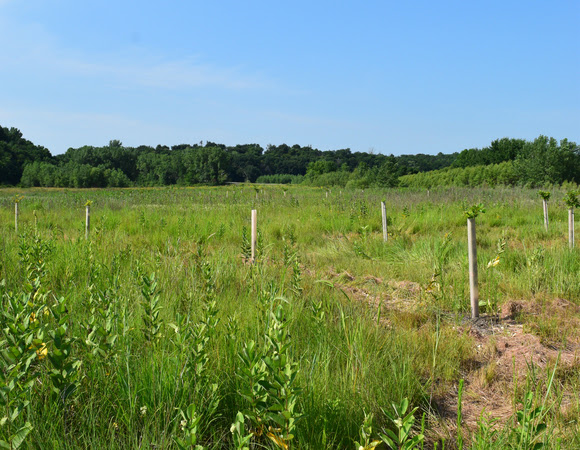The same week that Scranton residents are justifiably proud of building a new playground, the Iowa Department of Natural Resources is touting another playground nearby – the North Raccoon Wildlife Area.
“The North Raccoon Wildlife Area just might be the biggest playground in Greene County. But rather than teeter-totters and swings, this playground offers excellent deer hunting, turkey, dove and rabbit hunting, river access and sandbar camping, bird watching, hiking and more,” wrote DNR wildlife biologist Josh Gansen in the Aug. 1 Iowa Outdoors, a weekly collection of news articles from the DNR.
Many area residents are familiar with McMahon Access, three miles east of Scranton off 230th St. The narrow strip of land on either side of the Raccoon River was developed more than 40 years ago as an easement project within the U.S. Department of Agriculture. The purpose was to improve water quality in the N. Raccoon River.
The 290 acres has grown to more than 720 since 2012, thanks to the Topeka shiner and local landowners “who wanted to share their piece of paradise,” Gansen wrote.
The lowly Topeka shiner gained fame when it was named to the endangered species list. Topeka shiners were found in several streams in the N. Raccoon watershed, and that slowed progress on some bridge projects. But, it also made federal funds available to purchase specific parcels of land in in the watershed to protect the minnow.
When the federal program ended, Gansen received calls from neighbors who were interested in selling their property. The DNR works with the Iowa Natural Heritage Foundation to purchase land from willing sellers.
Jeff and Roxanne Gorsuch of Jefferson are among them.
“We had used the land well,” Roxanne Gorsuch said. “We bought it when our kids were young to have a place to camp and hunt and go 4-wheeling. They got older and our priorities changed. When we were asked if we were willing to sell, our passion came to make it available to more people.”
Another tract was purchased from Bedrock Concrete Products LLC. It was previously owned by Bruce Beazor and includes oak savannah knobs by the river and an abandoned quarry where fishing is available.
A parcel east of the parking lot north of the entrance to Slininger Woods on Kirkwood Ave had a dove food plot last year, but this year it will have food plots of turnips and winter wheat that will be attractive to deer and turkeys.
Eighty acres across the road from the food plot will be allowed to return to forest with nut-producing trees and shrubs interspersed “to add diversity,” Gansen wrote.
The most recent acquisition was added only a few weeks ago. The 65 acres is a mile north of Highway 30 north of 215th St. It was purchased from Ronald Teeples. There DNR staff will clean up an old farmhouse foundation and move rusting and dilapidated items.

Management varies by parcel. One section in a floodplain has 100 acres of prairie and wetland basins built to flood in the spring. The young prairie wetland “is alive with grasshoppers, monarchs, swallows, dragonflies darting, zagging and bombing under the watchful eye of an immature bald eagle. Three young crow-sized pheasants darted from the mowed area to the safety of the taller prairie grasses,” Gansen wrote.
Because the river bisects the N. Raccoon Wildlife Area, paddlers, anglers and other river users have a unique opportunity to camp on the sandbars in the public area when water levels are low. “These aren’t standard camping sites. There are remote spots for a specific experience,” Gansen wrote.
Greene County conservation director Dan Towers credits Gansen for putting the wildlife area together. “He has Greene County way ahead of the game in acquiring public ground for outdoor recreation, not only on the river, but at Dunbar Slough, too,” Towers said.
